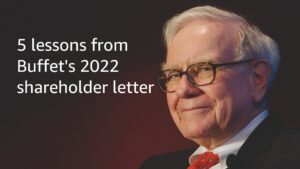0. What is this post about?
Multi-bagger stocks are a delight to hold. They give you consistent returns over multiple years. Multi-bagger means giving more than 100% returns. Finding and investing in a multi-bagger stock is every stock investor’s aim. While there is much info and tricks on picking the next multi-bagger, this post is about identifying when to leave behind (exit) a past multi-bagger. Leaving a stock which has given you two or three times returns is tough. However, stock investment, profit/loss booking, should be done without the influence of emotions. This post aims at providing a framework on how to evaluate a past multi-bagger, to help you decide whether to invest more, hold, or actually exit the stock. Let’s get right into it.
1. Decreasing Life of Companies
It is important to understand the different stages of a company, and its overall life span. Typically, a company goes through four stages in its lifecycle – (a) Startup – when a company comes into being, is the underdog, and is figuring out a product-market fit, or finding its first customers. (b) Growth/Expansion: When the company has figured out the formula for scale, and grows non-linearly, scaling revenue and profits. (c ) Maturity: Company has reached critical mass, its exponential growth rate has tapered down. Company maintains a steady growth rate, consolidating its position in the market. (d) Decline: Company degrows. Its revenue and profit starts declining. Its products or services are no longer in popular demand. All companies go through this journey. Post the decline of a company, it will eventually close down, or file for bankruptcy, or be acquired by another company.
The total lifecycle of a company, right from starting up to decline, is decreasing over time. Different industry veterans have put a different number to this declining life cycle, but they all agree that the average life of a company is decreasing. Refer this economic times article as an example, which forecasts average life of an S&P 500 company to decrease by more than 50%, from 33 years to 12 years or less by 2027. The creative and technology disruption is partially responsible, ever increasing customer expectation is another. Without going deep into reasons for decreasing life of a company, let us accept the unanimous viewpoint – backed by data, that average life of companies is decreasing. This means that if your multi-bagger stock gave you good returns for 29 years straight in the 2000’s, a multi-bagger stock in the 2030s will give good returns for 5-10 years only.
2. How much steam is left in a multi-bagger stock?
For a retail investor, it is important to determine how much steam is left in the multi-bagger stock. In simple words, how much further can the stock run, giving you good returns. There are five key signals to look out for. I have taken three multi-bagger stocks as examples: Reliance (4X price increase in 2010-2020), HDFC Bank (7.5X price increase in 2010-2020), IOC – Indian Oil Corporation (3X price increase in 2010-2020) . To make the learning of this framework fun, I will assign three points to each example company, depending on how well they score on the evaluation area. Three being the highest score, and one being the lowest score. At the end, we will see which company receives the maximum score, and which past multi-bagger should be left behind.
2.1 Sunrise vs Sunset Industry
Find out if the industry sector the company operates is growing over time, or reducing over time. A sunrise industry sector will grow faster than the (country’s GDP growth rate) + (Inflation rate). A sunset sector typically grows slower than industry growth rate, or actually shows de-growth over time. India’s GDP grows at around 7% yearly, and average yearly inflation is 5%. Hence any sector growing faster than 11% is a potential sign of future multi-bagger.
A simple Google search using the following phrases will help you know between sunrise and sunset sectors: “<input your industry> growth outlook”, “<input your industry> growth forecast” etc. Some examples of sunset industries are obvious from the news, such as the onset of electric vehicles replacing internal combustion engine based automobiles. Oil and petroleum refineries to be replaced by green energy in the next 20 years. A future multi-bagger stock will be in a sunrise industry, getting tailwinds from the overall market size expansion. Let’s look at our three examples, access them, and assign scores.
Reliance: Primarily in the oil and petroleum business. Google search shows CAGR growth of 3.6% for the next 20 years, till 2040 (Source: https://www.ibef.org/industry/oil-gas-india). Crude oil is expected to be replaced by Green energy over the next decade or so. Oil % Petroleum is a sunset industry, hence Reliance gets a score of 1, as its primary industry is a sunset industry. Note that you may argue that Reliance is aggressively diversifying its business, which we will discuss in signal 2.3 below.
Indian Oil Corporation: For the reasons mentioned above for Reliance, IOC also gets a score of 1, as it operates in the same sunset industry of Oil & Petroleum.
HDFC Bank: HDFC bank operates in the banking sector. It is well placed to penetrate urban, and rural markets of India. Financial services industry is expected to grow fivefold in the next five years (Source: https://www.ibef.org/industry/financial-services-india). Financial services is a sunrise industry. Hence, HDFC Bank gets 3 points.
| Reliance | IOC | HDFC | |
| Sunrise/Sunset Industry | 1 | 1 | 3 |



2.2 Management
A good management can be the deal breaker for a multi bagger stock evaluation. A good management can adopt new trends, pivot business strategy to more profitable lines. Whereas a bad management will work for themselves, not for the company’s stakeholders. Bad management will accelerate the decline phase of a company. But a good management will delay the decline phase of the company, and can even pivot the company from a sunset to a sunrise industry sector. You can learn about management of a company from the company’s website, under “About Us”.
Reliance: The second generation of the Ambanis, Mr. Mukesh Ambani, is running the company well. Reliance has ventured into multiple new markets, including Green Energy and Technology enabled Internet companies. Reliance has been able to hire top talent from IITs, IIMs, and ex-employees of top companies in India such as Amazon,. A good example is the disruption caused by the entry of Reliance Jio in the telecom industry, toppling even the industry veterans such as Airtel and Vodafone-Idea. Reliance gets a 3 score for management.
IOC: Indian Oil Corporation leadership is top notch in their industry sectors, coming from renowned pedigree such as IITs and NITs. IOC’s leadership has decades of experience in petroleum and refineries business, and are masters of their trade. However, there is no indication of them having the expertise to diversify the business, to pivot into a sunrise industry. Hence, due to lack of versatility, and lack of long term management vision spanning beyond 10 years, I would give IOC management a rating of two out of three.
HDFC Bank: HDFC Bank’s management used to be top notch. Mr. Aditya Puri, ex CEO of HDFC Bank is said to be one of the best CEOs an Indian company has seen. Post Mr. Aditya Puri’s departure in 2020, the reins of the company was passed on to the CFO, Mr. Shashi. With the new top management coming in, it might be a little early to give a three star rating to HDFC’s management. HDFC Bank faces competition from second and third largest private banks – ICICI and Axis bank, and also from NBFCs and Neo Banks. It is yet to be seen if the new HDFC Bank’s management can brave the fintech disruption, and continue HDFC’s lead in India’s financial future. Hence, I have given HDFC Bank’s management two out of three (as of writing this post in Apr’2022).
| Reliance | IOC | HDFC | |
| Sunrise/Sunset Industry | 1 | 1 | 3 |
| Management | 3 | 2 | 2 |
2.3 Expansion Plans
Expansion plans of a company, either by entering new geographies, or entering new business segments, are crucial to understand the future growth prospects of the company. Expansion plans can help bring out a company from sunset to a sunrise sector, if played right. Expansions via acquisitions are tricky to evaluate. If the company has a history of successfully implementing mergers or acquisitions, then this type of expansion will play in the company’s favour. If not, then it is better to wait and watch how the acquisition plays out. Converting mergers and acquisition to a long term growth driver for the company is a difficult job, and requires experienced management. You can learn about expansion plans from the company’s annual reports. Lets dive into evaluating our example past multi-baggers:
Reliance: Reliance is aggressively tapping into the technology enabled sectors – eCommerce, grocery delivery, electric batteries to drive electric cars etc. It is investing in solar energy, setting up solar gigawatt plants, and acquiring innovative startups working in this space. Some key tech startup acquisitions/investments by Reliance include Milkbasket (grocery delivery), Dunzo (logistics startup), Two Systems (a metaverse startup), Netmeds (medicine delivery), Urban Ladder (furniture eCommerce), Saavn (music streaming platform), Aesteria (drone tech) to name a few. These investments made between 2020-2022, are expected to pay off in the next decade, as Reliance forays into the tech industry space. I would give Reliance a three out of three in expansion plans.
IOC: IOC is expanding within the sunset industry of Oil and Petroleum. It has plans to expand petrol pump outlets, expand gas pipelines etc. Its vision is to cater to rising energy demands of India by a mix of renewable energy and non-renewable energy. There is no aggressive plan to transition to green energy altogether. IOC is doing interesting research on using Hydrogen as a source of energy, however its real world application at scale is yet to be seen. Due to lack of expansion plans into sunrise industry sectors, and unproven research projects, I will give the IOC one out of three points in terms of expansion.
HDFC Bank: HDFC bank has provided a pleasant future growth strategy, driven by technology and expansion to underpenetrated geographies (rural areas) in India. However, they may be running slower than other rising fintech companies. Neo Banks, and NBFCs in India, which are mobile only platforms and provide access to banking service (including KYC) at the tap of the phone. Execution excellence of technology projects in HDFC Bank is yet to be seen. While HDFC plans to optimize its retail bank outlets, I believe that for a company as large as HDFC, change will come slowly, and an annualized 20%+ stock returns in the future is doubtful. I will give HDFC a two out of three in the expansion plans area.
| Reliance | IOC | HDFC | |
| Sunrise/Sunset Industry | 1 | 1 | 3 |
| Management | 3 | 2 | 2 |
| Expansion Plans | 3 | 1 | 2 |
2.4 Stable / Growing Margins
The earlier three sections talk about the fundamental analysis of the past multi-bagger stocks. This section is about technical indicators. We will look at – Operating Margins, Return on Equity, Sales growth. A stable margin, or expanding margins is a good sign, and vice versa. A multi-bagger company, as it grows big, is able to benefit from economies of scale. Its supply and distribution channels are deep and stable. It has created a well known brand among its customers, thus reducing its customer acquisition cost. All of these factors should reflect in the company’s margins, sales growth, and return on capital employed.
Summary table of past 10 years, past 5 years, and past 4 years Sales growth, OPM, and ROE is below.

Reliance: Reliance sales growth is stable, slightly increasing over time. Its operating margin is improving over the years, which is a good sign. Its Return on Equity is stable over the years. With strong margins and sales growth, Reliance gets 3 points.
IOC: IOC’s sales has shown de-growth over recent three years, which is concerning (another sign of being in a sunset industry). IOC’s operating margin and ROW has been stable over the years. Because of decreasing revenue growth, IOC gets one point.
HDFC Bank: HDFC bank’s revenue growth has decreased over recent years. Its operating margin is stable, and slightly increased in recent years. HDFC’s ROE is stable across the years. HDFC Bank gets two points owing to stable ROW, financing margins, but decreasing rate of revenue growth.
Summary
Final points table is as below.
| Reliance | IOC | HDFC | |
| Sunrise/Sunset Industry | 1 | 1 | 3 |
| Management | 3 | 2 | 2 |
| Expansion Plans | 3 | 1 | 2 |
| Margin & Revenue Growth | 3 | 1 | 2 |
| Total Points | 10 | 5 | 9 |
Reliance: Reliance is the winner with 10 points. It is expected to continue being a multi-bagger stock in the future (5-10 years). Its revenue is growing, margin is expanding, and it is doing a successful pivot into sunrise industry sectors.
HDFC Bank: HDFC Bank is a close second finisher, with 9 points. It is expected to grow well into the future, however, its stock price may not grow at the same pace at which it had grown in the past 10 years. HDFC lost out first place to Reliance owing to its unproven growth strategy, and recent change in leadership, with the new leaders yet to prove their mettle in the digital banking era we are entering into.
IOC: IOC stands last with only 5 points. I would not recommend investing in IOC, as it is no longer a multi-bagger stock. This past multi-bagger has outlived its youth, and is on the way to the decline phase of the company lifecycle. Its revenue is de-growing, it is in a sunset industry, with no signs of diversifying or pivoting to a sunrise sector.
3. How to act on Past Multi-baggers?
Once you have analyzed a past multi-bagger company as per the framework given in section 2, one can divide the list of past multi-baggers in three categories:
Category 1: Future Multi-bagger: Example: Reliance – Invest more, buy on dips. One can allocate 4-5% of one’s stock portfolio to this stock.
Category 2: Some Steam left: Example: HDFC Bank – Invest more, buy on dips. One can allocate 1-2% of one’s stock portfolio to this stock.
Category 3: Past Multi-bagger Stock, on decline path: Example: IOC – Exit, and do not invest more.
4. Are there exceptions to this framework?
Yes, the turnaround stories we hear about from time to time. However, these instances are few, and are backed by the same indicators we evaluated in section 2: Good Management, Expansion plans into a sunrise industry sector, and healthy technical indicators (margin expansion, higher rate of revenue growth).
Hope this helped you to make a decision in investing more, or exiting from a past multi-bagger stock.
Do share in the comments below your past multi-bagger stock that you analyzed using the section 2 framework above, and what your outcome decision was and why.
Good luck, and happy investing!





It’s a shame you don’t have a donate button! I’d most certainly donate to this superb blog!
I suppose for now i’ll settle for book-marking and adding your
RSS feed to my Google account. I look forward to new updates and will talk about this
website with my Facebook group. Chat soon!
Nice blog here! Also your website loads up fast! What host are you using?
Can I get your affiliate link to your host? I wish my site loaded up as
fast as yours lol
Write more, thats all I have to say. Literally, it seems as though you relied on the video to
make your point. You definitely know what youre
talking about, why waste your intelligence on just posting videos to
your site when you could be giving us something informative to read?